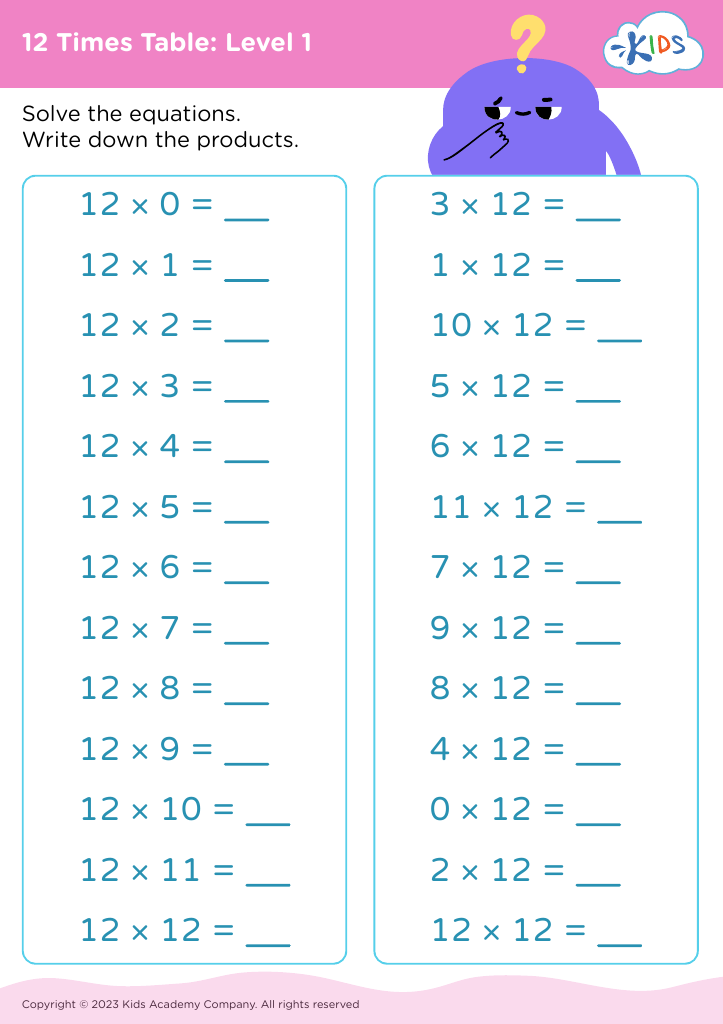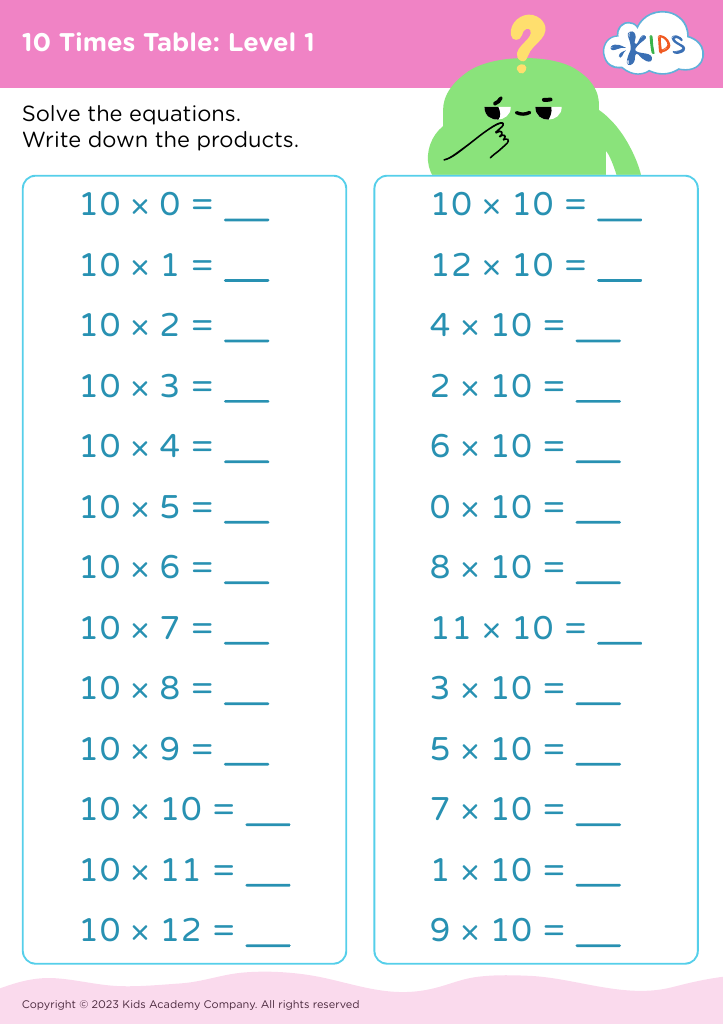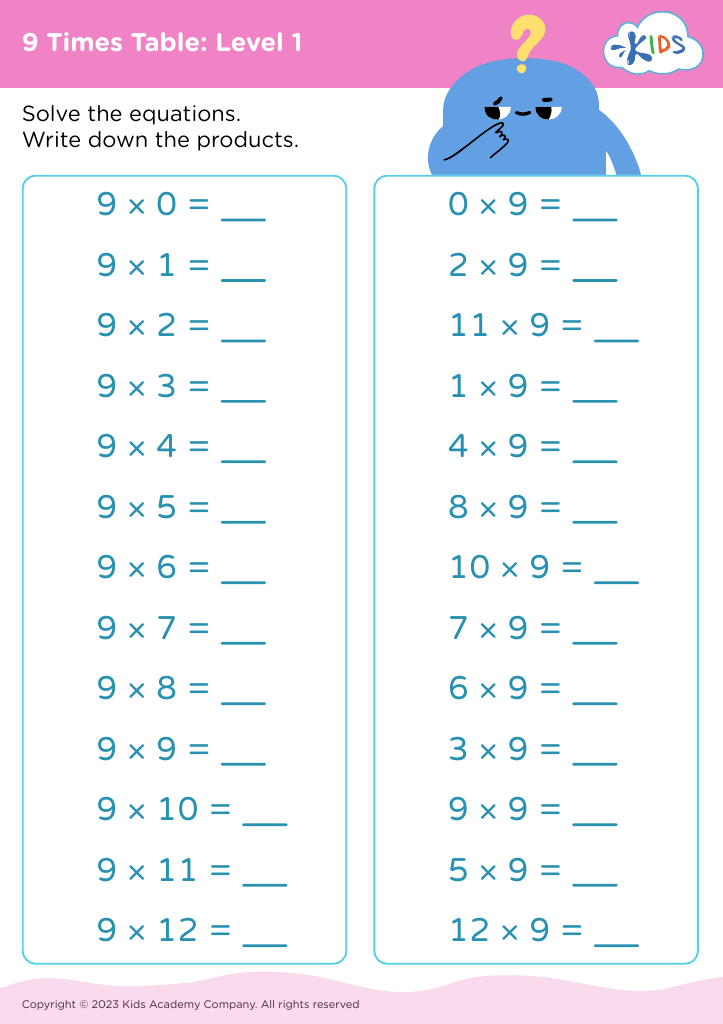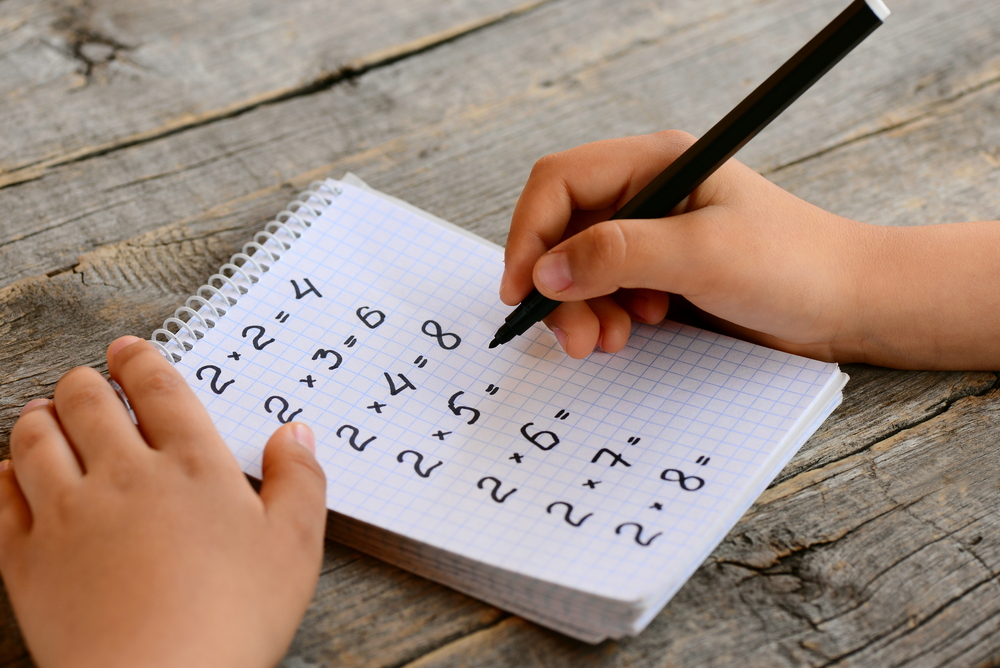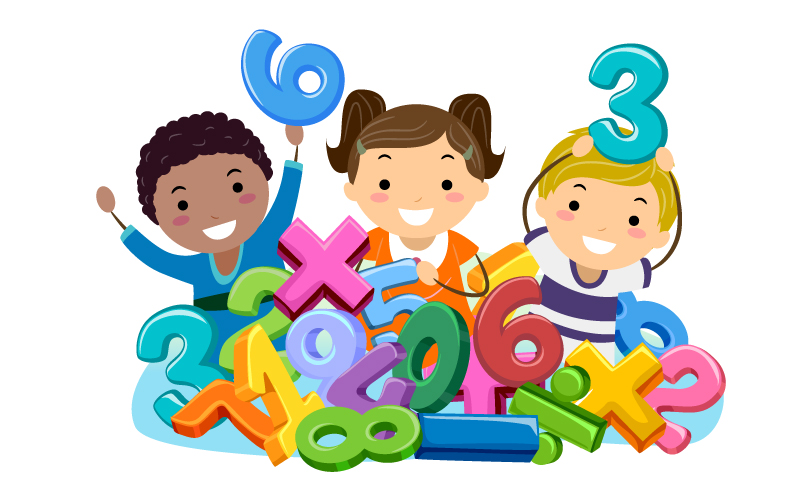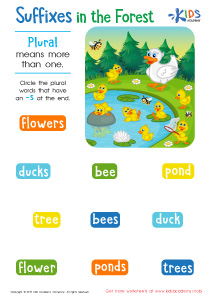Understanding patterns Easy Times Tables Worksheets for Ages 4-9
3 filtered results
-
From - To
Unlock your child's potential with "Understanding Patterns: Easy Times Tables Worksheets for Ages 4-9" from Kids Academy! Designed to make learning fun and effective, these printable worksheets break down multiplication concepts, emphasizing pattern recognition. Perfect for young learners, our resources enhance math skills and build a strong foundational understanding of times tables. Encouraging independent learning and confidence, these engaging activities are ideal for kids’ growing minds. Aligning with educational standards, these worksheets not only make math easy but also enjoyable. Boost your child's academic success and love for learning with Kids Academy’s expertly crafted tools today!
Understanding patterns in early times tables is crucial for young children, aged 4-9, because it lays a strong mathematical foundation. For parents and teachers, caring about this early understanding can make a significant difference in a child's academic journey and confidence in math. Patterns in times tables help children develop cognitive skills, such as recognizing regularities and making predictions. These skills are fundamental to their overall critical thinking and problem-solving abilities.
Mastery of times tables through pattern recognition eases the transition to more complex math topics. For example, knowing that 2 times any number is just doubling it or recognizing the common ending digits in the multiples of 5 (i.e., 0 and 5) helps children internalize these facts faster and more efficiently. This competence not only increases their speed and accuracy in math calculations but also builds confidence, reducing math anxiety.
Moreover, an early grasp of times tables encourages a positive attitude towards learning. When children recognize they can understand and remember patterns, they become motivated and engaged learners. Parents and teachers who emphasize understanding patterns instead of rote memorization foster a deeper comprehension that aids in long-term math success, contributing to overall academic progress and a love for learning.
